Ever wondered if your furry best friend is sleeping too much or too little? From playful puppies to wise senior dogs, understanding how many hours a day should dogs sleep may surprise you—and it can make all the difference for your dog's happiness and health. Dive into the science, common myths, and best practices around dog sleep . Find out exactly what your dog needs for the perfect slumber!
Are You Surprised by How Many Hours a Day Should Dogs Sleep? Let’s Uncover the Facts
- Find out how many hours a day dogs sleep at every age, and why understanding their sleep habits is crucial for their health and happiness.
- Bust myths and learn expert-backed sleep practices to ensure your dog gets optimal rest.

Understanding How Many Hours a Day Should Dogs Sleep: The Science of Dog Sleep
What is Considered Normal Sleep for Dogs?
Most dogs sleep between 12 to 14 hours a day . Puppies and senior dogs may clock up even more rest time. Unlike humans who get their sleep in a single block at night, dogs tend to sleep in multiple segments throughout the day. This segmented sleeping pattern helps dogs stay alert and adaptable, which historically benefited them as both hunters and protectors.
If you notice your dog is sleeping more than usual, it might be due to growth, recovery, or just a long day at the park! However, understanding typical amounts of sleep a dog needs will help identify any changes that may signal a health issue.
Factors That Influence How Many Hours a Day Should Dogs Sleep
Several factors shape the amount of sleep a dog requires. Age is the most critical— puppies and older dogs both require more sleep than healthy adults. Breed size plays a role, too; bigger breeds tend to need more downtime to recharge their bodies. Additionally, activity level , recent exercise, overall health, daily routines, and emotional well-being all influence a dog’s sleep schedule and sleeping habits .
Disruptions to routine, household noise, and the quality of their dog bed all affect how well your dog sleeps. Understanding these influences helps you optimize your pet's environment and daily routine for the best rest possible.
How Many Hours a Day Should Dogs Sleep? Age, Breed, and Life Stage Differences
Puppies and Young Dogs: Explaining Puppy Dog Sleep Schedule and Patterns
Puppies need a lot of sleep—often 18 to 20 hours per day! This heavy rest supports their rapid growth, learning, and immune health. It’s perfectly normal to see a puppy doze off in the middle of play or after a quick walk. Since puppies tend to sleep wherever they feel safe, setting up a comfortable dog bed in a quiet, cozy area of your home is key.
Young dogs might still nap frequently but will begin to settle into routines with more distinct periods of awake activity. Be especially mindful not to overstimulate or overtire your puppy—quality rest is just as essential as play!
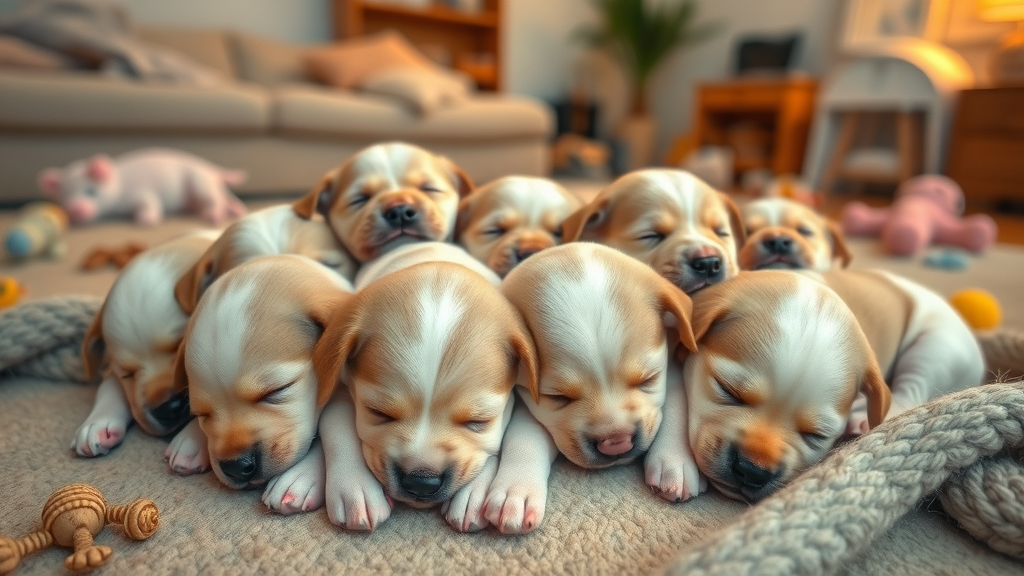
How Adult Dogs and Senior Dogs’ Sleep Habits Change
An adult dog generally sleeps about 12 to 14 hours each day, balancing play, rest, and alertness. However, as they transition into their senior years, older dogs may need up to 18 hours of sleep. This increased sleep time helps their bodies recover from everyday wear and tear.
Keep in mind that changes in sleeping patterns —such as suddenly sleeping much more or less—could signal underlying health issues. If you notice these shifts, a trip to your vet is recommended to rule out any problems and keep your dog’s amount of sleep healthy.
Older Dogs: Do They Really Sleep More?
Senior dogs often spend more hours sleeping and relaxing. Their metabolism slows, and chronic health conditions or joint discomfort can make rest more appealing. While it’s natural for an older dog to nap more, be alert for sudden extremes or signs of distress. Excess sleep, especially if paired with lethargy or loss of appetite, could point to a health issue.
Providing a supportive, orthopedic dog bed and minimizing noise or disruptions can dramatically improve an older dog’s quality of sleep, supporting both body and mind in their golden years.
Breed Variations: Why Some Breeds Need More Sleep a Day
Not all breeds are wired the same! Working dogs like Border Collies or Huskies often sleep less due to high activity levels , while larger breeds such as Great Danes or Mastiffs may be content snoozing upwards of 18 hours per day. Genetics, job roles, and body size all play a big part in how much sleep your dog needs.
Understanding specific breed needs helps keep your dog's sleeping patterns healthy. Provide both mental and physical stimulation during awake times, then let them rest in a calm spot. When in doubt, follow your vet’s breed-specific recommendations for hours per day spent snoozing.
| Age Group | Small Breeds | Medium Breeds | Large Breeds |
|---|---|---|---|
| Puppies | 18–20 hrs | 18–20 hrs | 18–20 hrs |
| Adult Dogs | 12–14 hrs | 12–14 hrs | 14–16 hrs |
| Senior Dogs | 14–18 hrs | 14–18 hrs | 16–20 hrs |
How Do Dog Sleep Patterns Compare to Humans?
REM Sleep, Sleep Cycle, and Deep Sleep in Dogs vs. People
While dogs and humans both experience REM sleep —the stage marked by rapid eye movement and vivid dreams—their sleep cycles are quite different. Dogs reach REM much faster (around 10–20 minutes) and have shorter, more frequent cycles compared to humans. This is why you may notice your dog twitching, running, or even softly barking while snoozing.
Understanding sleep stages and cycles helps us appreciate why dogs sleep more than we do. Their bodies are built to rest and recharge in short spurts throughout the 24-hour period , which is normal for their biology and everyday needs.
Why Understanding Dog Sleep Benefits Owners
Knowing about dog sleep helps pet parents support their furry friend’s physical health, mood, and behavior. If you notice changes in your dog's sleep —like restlessness at night, excessive daytime sleep, or difficulty waking—it could expose early signs of stress, discomfort, or medical issues.
Monitoring and advocating for your dog’s sleep schedule strengthens the bond with your pet and creates a happier, more balanced home environment for everyone.
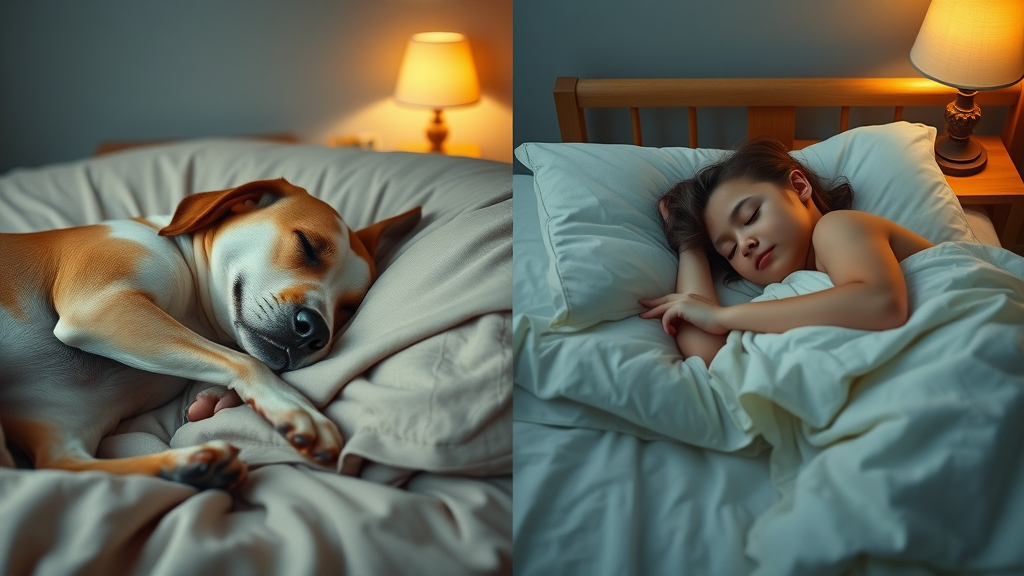
The Importance of Sleep Schedule and Routine in Optimizing How Many Hours a Day Should Dogs Sleep
Best Practices for Establishing a Healthy Dog Sleep Schedule
Help your dog enjoy quality sleep by creating a consistent sleep schedule . Aim to feed, walk, and settle your dog for bedtime at the same times daily. Choose a quiet, dim spot for their dog bed , away from household traffic and loud noises.
Keep the sleep environment comfy with soft bedding and perhaps a favorite toy. You might also establish a bedtime routine, such as a relaxing walk or some gentle petting, to signal it’s time to wind down. Consistency helps your dog’s internal clock and supports both sleep quality and overall health.
Should Your Dog Sleep in a Dog Bed or With You? Pros and Cons
Choosing whether your dog should sleep in their dog bed or share yours is a personal decision. Dog beds provide dogs a space of their own, supporting healthy boundaries and better-quality sleep—especially for light sleepers or dogs who tend to shift a lot. In contrast, letting your dog sleep with you can strengthen your bond and ease anxiety, but may disrupt your rest or reinforce clingy behaviors.
Consider your dog's health, size, age, and sleeping habits. For senior dogs or dogs with mobility issues, an orthopedic dog bed on the floor might be safest. Watch for changes in sleeping pattern either way, and adjust as needed to keep everyone happy and rested.
Signs Your Dog Isn’t Getting Enough Sleep: What To Watch For
Look for warning signs like irritability, hyperactivity, lack of focus, or changes in appetite. Dogs who don’t get enough sleep might also become more vocal, anxious, or even destructive at home. Behavioral changes, accidents in the house, pacing at night, or difficulty waking signal your dog could use more rest.
Chronic sleep deprivation can weaken your dog’s immune system and impact mood, so track any shifts in amount of sleep . Consult your vet promptly if these sleeping habits persist or worsen, to rule out underlying health problems.
Common Dog Sleeping Habits, Positions, and What They Mean
Interpreting Your Dog’s Favorite Sleep Position
The way a dog is sleeping can reveal a lot about their mood and health. Dogs curled in a ball conserve warmth, while those flopped on their backs expose their belly—showing they feel safe and secure. Side-sleepers are relaxed, whereas ‘Superman’ (legs outstretched) usually means your pup is ready to pop up at a moment’s notice.
While there’s no single “right” position, pay attention to shifts in your dog’s sleeping habits . Sudden changes, odd twitches, or consistent restlessness may point to discomfort or another issue requiring attention.
Curious Dog Sleeping Habits—What’s Healthy, and What’s Not
Most dogs sleep in a rotation of positions, adjusting as they age or depending on how secure they feel in their environment. Frequent shifting or sudden preference for unusual sleeping spots could indicate a need for a new dog bed or changes in temperature, light, or noise.
However, pacing throughout the night, inability to settle, or sleeping in strange areas away from family could signal stress, illness, or pain—so if these patterns continue, consult your vet.
- Curling Up: Conserving warmth, feeling protected.
- On Their Back: Utmost trust, complete relaxation.
- Side Sleeping: Deep rest, comfortable and happy.
- Superman Pose: Ready for action, light sleep stage.
- Belly Up, Paws in Air: Cooled off, feeling very secure.
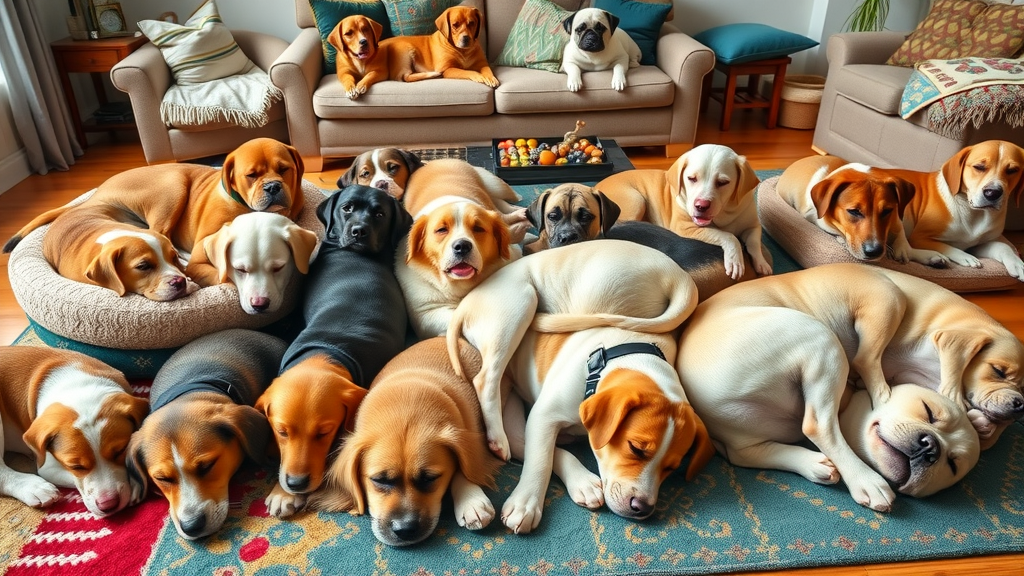
Health Concerns Related to Amount of Sleep and Sleep Apnea in Dogs
Could Too Much or Too Little Sleep Signal Underlying Health Issues?
Yes! Both excessive and insufficient sleep time could indicate medical issues. Too much sleep might be related to hypothyroidism, diabetes, or infections. Too little sleep can be a sign of anxiety, pain, or discomfort.
Always consider your dog’s activity level and personality before worrying—dogs require more sleep during some life stages. Still, trust your instincts and consult your vet if you’re concerned, especially with sudden changes.
Recognizing Sleep Apnea and Sleep Disorders in Dogs
Some breeds, like Bulldogs or Pugs, are prone to sleep apnea due to their short snouts. Signs include loud snoring, choking, or gasping during sleep. Sleep disorders (like restless sleep or frequent waking) can also stem from anxiety, pain, or undiagnosed health problems.
If you suspect sleep apnea or another issue, seek prompt veterinary advice for diagnosis and to discuss treatment options, which might include medication, surgery, or changes to sleep environment.
Supporting Dogs With Health Conditions: Adjusting the Sleep Environment
If your dog has health conditions, a supportive dog bed (like an orthopedic mattress), accessible water, and padded surfaces can help. Minimize night-time disruptions and keep sleeping quarters free from drafts or temperature extremes.
For senior dogs , consider ramps instead of stairs and extra bathroom breaks. Tailoring your dog's sleep space and schedule supports their overall comfort and helps optimize their hours of sleep for better recovery and wellness.
| Symptom | Potential Issue | Vet Visit Needed? |
|---|---|---|
| Sudden change in sleep patterns | Pain, illness, anxiety | Yes |
| Restless sleep, frequent waking | Discomfort, sleep apnea | Yes |
| Loud snoring/choking during sleep | Possible sleep apnea | Yes |
| Lethargy, loss of interest, appetite change | Underlying health issue | Yes |
How Activity Level, Environment, and Routines Affect How Many Hours a Day Dogs Sleep
Daily Activity, Walks, and Mental Enrichment: Their Impact on Dog Sleep
A well-exercised dog sleeps better! Activity level —from walks to playtime or training—helps burn off energy, making restful sleep easier to achieve. Dogs that are bored or under-stimulated may develop restless behaviors, while those who get mental enrichment and physical exercise tend to establish healthy sleeping habits .
Adding new toys, puzzles, or adventures to your dog's day will help balance the need for stimulation with the requirement for ample hours of sleep . Keep your dog's routine structured for better sleep at night and calm during the day.
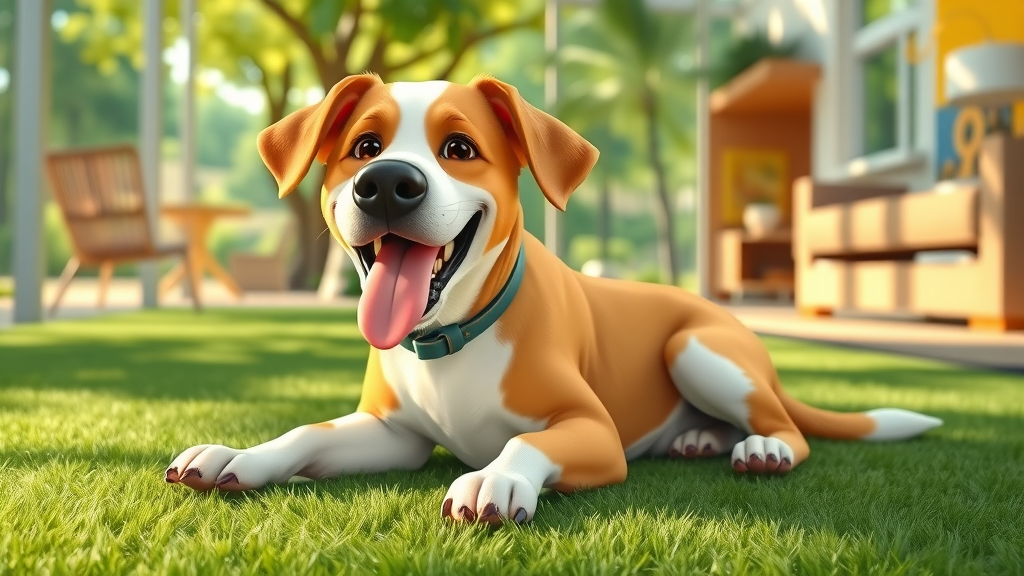
Environmental Factors: Light, Noise, and the Ideal Dog Bed
Light, noise, and household traffic all impact dog sleep . Choose a spot for your dog’s bed that's away from busy areas and loud sounds, and try to keep it dim or shaded at night. The quality of the dog bed is crucial, especially as your pet ages.
Soft, supportive materials with enough space to stretch out, but with cozy boundaries, will help your dog relax. A comfortable environment helps your dog’s sleep schedule stay consistent, supporting their physical and mental health.
Managing Changes: Traveling or Moving—Supporting Your Dog’s Sleep Schedule
Travel or moves are stressful for pets, often disrupting sleep patterns . To help, bring along your dog's familiar bedding and keep feeding and exercise schedules as close to normal as possible. New surroundings can trigger anxiety or excitability; provide extra calm, comfort, and patience.
Use familiar cues like a favorite toy or treat before bed, and give your dog time to adjust. If your dog still struggles to sleep after several days, check with your vet for further advice.
“A tired dog is a happy dog, but every dog’s sleep needs are as unique as their personality.” — Dr. Lisa Green, DVM
People Also Ask
How many hours should a dog sleep in a 24-hour period?
Most dogs sleep between 12 to 14 hours in a 24-hour period , depending on their age, breed size , and activity level . Puppies and senior dogs may sleep even longer to support growth or recovery.
Is it normal for a dog to sleep all day?
It's normal for dogs—especially puppies and older dogs —to spend most of the day sleeping. However, sudden or drastic changes in sleep duration or patterns should prompt a discussion with your vet to ensure no health issues are present.
Is it true happy dogs sleep a lot?
Yes! Happy, secure, and well-cared-for dogs tend to sleep more, as they aren't stressed or anxious. Rest is essential for canine well-being, and dogs will naturally nap when their needs are met.
How much sleep do dogs need by age?
Puppies: 18–20 hours
Adult dogs: 12–14 hours
Senior dogs: Up to 18 hours (sometimes more, depending on health and breed)
Answers to People Also Ask
- Dogs usually sleep between 12–14 hours in a 24-hour period depending on age and breed.
- It can be normal for dogs, particularly puppies and older dogs, to sleep most of the day, but sudden changes warrant a vet check.
- Yes, content and unstressed dogs will spend a good portion of their day resting or sleeping.
- Puppies: 18–20 hours; Adult dogs: 12–14 hours; Senior dogs: up to 18 hours a day.
Frequently Asked Questions on How Many Hours a Day Should Dogs Sleep
How can I tell if my dog is not getting enough sleep?
If your dog is irritable, restless, hyperactive, or seems more anxious than usual, they may not be getting enough sleep. Other signs include pacing, trouble settling, or increased vocalizations. Watch for chronic tiredness or a change in behavior, and consult your vet if problems persist.
Should I worry if my dog suddenly sleeps more than usual?
A sudden, significant increase in sleep may indicate illness, pain, or depression. Keep an eye on other symptoms, such as appetite changes, limping, or lethargy, and seek advice from your veterinarian if you notice anything unusual.
What can disrupt my dog’s sleep cycle?
Major routines changes, loud noises, household visitors, travel, pain, illness, or anxiety can all disrupt a dog’s sleep cycle. Keeping a consistent schedule and providing a quiet, safe place can help reduce sleep disturbances.
Can dogs suffer from sleep apnea and how is it treated?
Yes, some breeds—especially those with short snouts—may develop sleep apnea. Treatment may include weight loss, managing allergies, surgery (in severe cases), or providing a sleep environment that encourages open breathing. Always check with your vet for a diagnosis and tailored care plan.
Best Practices and Key Takeaways for Optimizing How Many Hours a Day Should Dogs Sleep
- Adjust rest based on your dog’s age and activity level.
- Prioritize a consistent sleep schedule and safe sleep environment.
- Monitor for health changes tied to sleep patterns.
- Consult your vet for any major concerns.
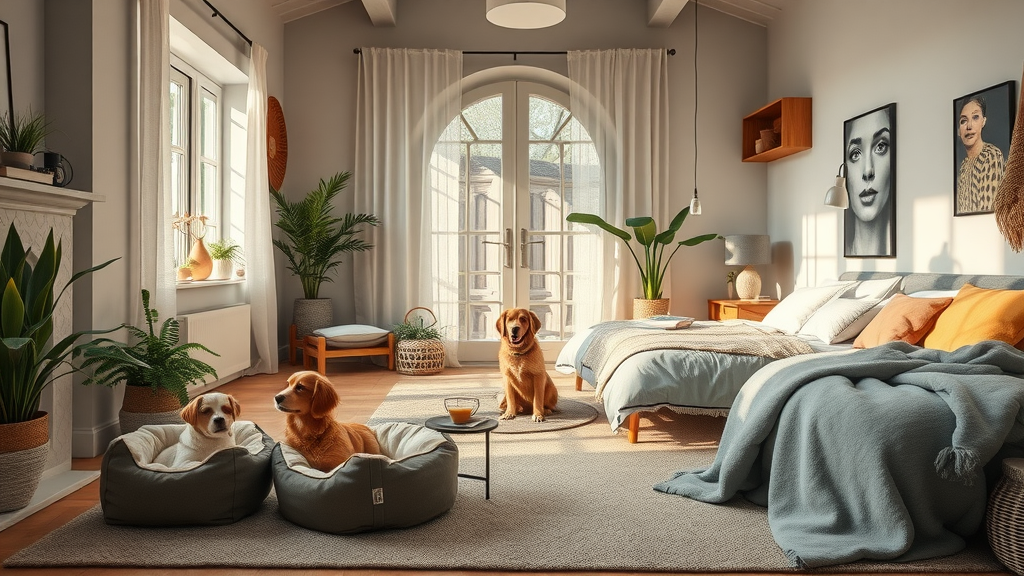
Ensure Your Dog Gets the Ideal Amount of Sleep Every Day
🐾 Love pets as much as we do? Get the best tips, treats, and tail-wagging stories delivered monthly. 👉 Subscribe to our newsletter and never miss a bark or purr!
📧 One email. All the value. Join thousands of pet parents who get our monthly roundup of pet care tips, product reviews, and giveaways.
Give your dog the gift of health—track their sleep, create comfort, and contact your vet with any concerns for lifelong vitality and joy!
Understanding your dog’s sleep needs is essential for their health and well-being. For a comprehensive overview, consider reading How Much Sleep Your Dog Needs , which delves into sleep requirements across different life stages. Additionally, Why Do Dogs Sleep So Much? explores factors influencing canine sleep patterns, including age, breed, and activity levels. These resources offer valuable insights to help you ensure your dog gets the rest they need.
 Add Row
Add Row  Add
Add 




Write A Comment